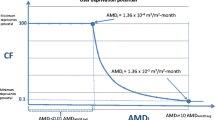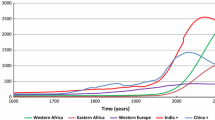Abstract
Using system analysis theory and methods, a dynamic model of a water resource supply and demand system was built to simulate trends in the supply and demand of water in the Changsha-Zhuzhou-Xiangtan (Chang-Zhu-Tan) urban agglomeration for the period 2012 to 2030. Four scenarios were examined; namely, a traditional development model, an economic development model, a water-saving model, and a coordinated development model. (i) The problem of balancing water resource supply and demand is becoming increasingly conspicuous with a growing population and a rapidly developing economy. (ii) By 2030, water demand is set to reach a total of 105.1 × 108 m3, with a water supply of 5.4 × 108 m3. A coordinated development model for water resource supply could meet the growing demands of socio-economic development, and generate huge comprehensive benefits. This will be the best solution for the development and utilization of a water resource supply and demand system in the Chang-Zhu-Tan urban agglomeration. (iii) We should accelerate the construction of water conservation projects, strengthen the management of water conservation, optimize economic structures, enhance our awareness of the importance of protecting water resources, hasten the recycling of waste water and environmental improvement, and promote utilization efficiency, and support the capabilities of water resources to meet our expectations.
Similar content being viewed by others
References
Berrittella M, Hoekstra AY, Roson K et al., 2007. The economic impact of restricted water supply: A computable general equilibrium analysis. Water Research, 41: 1799–1813.
Cai X M, Rosegrant M W, 2002. Global water demand and supply projections. Part 1: A modeling approach. Water International, 27(2): 159–169.
Chen Chengxian, Yan Guangle, 2000. Research on system dynamics model of water resources sustainable development in China. Journal of University of Shanghai for Science and Technology, 22(2): 154–159. (in Chinese)
Chen Shouyu, 2001. Theory model and a method for qualitative assessment of sustainable development of regional water resources. Engineering Science, 3(2): 33–38. (in Chinese)
Chen Xiaohong, Chen Yongqin, Lai Guoyou, 2002. Optimal allocation of water resources in Dongjiang River basin. Journal of Natural Resources, 17(3): 366–372. (in Chinese)
Cheng Guodong, 2002. Evolution of the concept of carrying capacity and the analysis framework of water resources carrying capacity in northwest of China. Journal of Glaciology and Geocryology, 24(4): 361–267. (in Chinese)
Dai Junyong, 2011. Accelerating the reform and development, and constructing the water conservancy of Hunan Province. China Water Resources, (17): 4–5. (in Chinese)
Deng Xiaoya, Yang Zhileng, Long Aihua, 2013. Ecological operation in the Tarim River basin based on rational allocation of water resource. Journal of Glaciology and Geocryology, 35(6): 1600–1609. (in Chinese)
Duan Chunqing, Liu Changming, Chen Xiaonan et al., 2010. Preliminary research on regional water resources carrying capacity conception and method. Acta Geographica Sinca, 65(1): 82–90. (in Chinese)
Fan Yingying, Liu Yong, Guo Huaicheng, 2006. Forecasting and analysis of balance between water resources supply and actual demand in Beijing City. Journal of Safety and Environment, 6(1): 116–120. (in Chinese)
Fang Chuanglin, Bu Weina, 2004. Competitiveness and extent of regional expansion restricted by water resource of Hexi corridor. Scientia Geographica Sinica, 24(5): 513–521. (in Chinese)
Feng Shangyou, Liu Guoquan, 1997. Frame of sustainable water resources utilization. Advances in Water Science, 8(4): 301–307. (in Chinese)
Feng Wenqi, Wang Liping, Xiang Bo, 2007. Water resources allocation in Shenzhen City based on simulation model. Journal of Wuhan University (Engineering Edition), (4): 65–69. (in Chinese)
Feng Zhiming, Liu Dengwei, 2006. A study on water resources carrying capacity in Jing-Jin-Ji region. Journal of Natural Resources, 21(5): 689–699. (in Chinese)
Gao Yanchun, Liu Changming, 1996. A study of the simulated calculation and optimal decision-making of regional water resources: Taking the plain area of the Hanzhong basin as an example. Journal of Natural Resources, 11(1): 23–32. (in Chinese)
Gu Kangkang, Liu Jingshuang, Chen Xin, 2008. Dynamic analysis of water resources supply-demand balance about mining cities in central Liaoning. Acta Geographica Sinica, 63(5): 473–481. (in Chinese)
Guo Huidong, 2011. Building the Xiangjiang River to the “Oriental the Rhine”. Xinxiang Review, (7): 14–16. (in Chinese)
Huang Linxian, Cao Yongqiang, Zhao Na et al., 2008. The sustainable development of water resources in Shandong based on system dynamics simulation. Water Power, 34(6): 1–4. (in Chinese)
Hunan Province Hydrology and Water Resources Survey Bureau (HPHWRSB), 2008. The investigation and evaluation of Hunan water resources. Changsha: Hunan Province Hydrology and Water Resources Survey Bureau. (in Chinese)
Hunan Province Water Resources Department (HPWRD), 2011. The construction planning of water conservancy of Changsha-Zhuzhou-Xiangtan urban agglomeration. Changsha: Hunan Province Water Resources Department. (in Chinese)
Hunan Province Water Resources Department (HPWRD), 2012. The bulletin of Hunan water resources in 2011. http://www.hnsw.com.cn/tabid/2990/Default.aspx. (in Chinese)
Ji Xinbin, Kang Ersi, Chen Rensheng et al., 2006. Analysis of water resources supply and demand and security of water resources development in irrigation regions of the middle reaches of the Heihe River Basin, Northwest China. Agricultural Sciences in China, 5(2): 130–140. (in Chinese)
Jin Juliang, Zhang Libing, Wei Yiming, 2004. Improved analytic hierarchy process for evaluating water resources sustaining utilization. Advances in Water Science, 15(2): 227–232. (in Chinese)
Kuang Yuehui, 2012. The situation, reason and countermeasure of the water shortage in Changsha-Zhuzhou-Xiangtan urban agglomeration. China Urban Economy, (1): 28–29. (in Chinese)
Li Jingbao, Wang Kelin, Zhu Ning et al., 2004. Flood & drought disaster and regulation of storm-runoff resources in Hunan Province. Journal of Natural Resources, 19(6): 716–724. (in Chinese)
Liang Lili, Wang Fang, 2010. Simulation of water resources evolution driven by vegetation construction and control of eco-hydrological processes in Erdos Larus Relictus Nature Reserve. Acta Ecologica Sinica, 30(1): 109–119. (in Chinese)
Liu Bintao, Tao Heping, Kong Bo et al., 2014. Research on the water resource security and its temporal-spatial distributions of Yunnan Province, China. Journal of Natural Resources, 29(3): 454–465. (in Chinese)
Liu Changming, Chen Zhikai, 2001. Actuality Evaluates and Trend Analysis of Water Resources Supply-demand in China. Beijing: China Water Resources and Hydropower Press. (in Chinese)
Liu Changming, Wang Hongrui, 2003. An analysis of the relationship between water resources and population- economy-society-environment. Journal of Natural Resources, 18(5): 635–645. (in Chinese)
Ma Guojun, Lin Dong, Liu Jundi et al., 2008. Optimal water resources allocation in Shiyanghe River basin based on multi-objective analysis. Journal of Desert Research, 28(1): 191–194. (in Chinese)
Ma Hailiang, Xu Jia, Wang Pucha, 2014. Water resource utilization and China’s urbanization. Resources Science, 36(2): 334–341. (in Chinese)
Min Qingwen, Yu Weidong, Zhang Jianxin, 2004. Fuzzy-based evaluation of water resources carrying capacity and its application. Research of Soil and Water Conservation, 11(3): 14–16. (in Chinese)
Qiu Junjie, He Liang, Chen Jizhong, 2009. Impact of low water level during dry season of Changsha section in Xiangjiang River on water intakes and the countermeasures. China Flood & Drought Management, (5): 21–24. (in Chinese)
Sagoff M, 1995. Carrying capacity and ecological economics. Bioscience, 45(9): 610–619.
Shi Yinjun, Su Xiaoling, Xu Wanlin et al., 2011. Water resources optimal allocation based on simulation of water resources transformation in Shiyanghe River basin. Journal of Natural Resources, 26(8): 1423–1434. (in Chinese)
Song Songbai, Cai Huanjie, 2004. Artificial neural network model for assessing the sustainable utilization of regional water resources. Transactions of the Chinese Society of Agricultural Engineering, 20(6): 89–92. (in Chinese)
Sun Yan, Liu Xi, Wang Xiuru et al., 2011. Balance and configuration of water supply and demand in Huairou district of Beijing City. Bulletin of Soil and Water Conservation, 31(5): 120–124. (in Chinese)
Tang Jie, She Xiaoyun, Lin Nianfeng et al., 2005. Advances in researches on the theories and methods of eco-environment water demand. Scientia Geographica Sinica, 25(3): 367–373. (in Chinese)
Wang Chenhua, Liang Chuan, He Xiaolong, 2005a. Study on evaluation method of water resources development and utilization in Yunnan Province. Journal of Water Resources Research, 23(3): 11–14. (in Chinese)
Wang Hao, Chen Minjian, He Xiwu et al., 2004. Rational allocation and research of water resources carrying capacity. China Water Resources, (22): 43–45. (in Chinese)
Wang Hao, You Jinjun, 2008. Advancements and development course of research on water resources deployment. Journal of Hydraulic Engineering, (10): 1168–1175. (in Chinese)
Wang Qifan, 1994. System Dynamics. Beijing: Tsinghua University Press. (in Chinese)
Wang Xu, Zhu Weiyao, Xiao Weihua et al., 2012. Water environment problems of Xiangjiang River basin and comprehensive corresponding strategies. Environmental Protection Science, 38(5): 5–9. (in Chinese)
Wang Yanlin, Wang Wenke, Yang Zeyuan et al., 2005b. Study on rational allocation and regulation of water resources for ecological environment in Weihe River basin of Shanxi Province. Journal of Arid Land Resources & Environment, 19(1): 14–21. (in Chinese)
Wang Zheng, Zheng Yiping, Feng Haojie et al., 2002. An analysis of water supply security in China’s economic development. Journal of Safety and Environment, 2(5): 13–18. (in Chinese)
Xia Jun, Zheng Dongyan, Liu Qing’e, 2002. Study on evaluation of eco-water demand in Northwest China. Hydrology, 22(5): 12–17. (in Chinese)
Xia Jun, Zhu Yizhong, 2002. The measurement of water resources security: a study and challenge on water resources carrying capacity. Journal of Natural Resources, 17(3): 262–269. (in Chinese)
Yang Jianqiang, Luo Xianxiang, 1999. Research of system dynamic model for sustainable utilization of water resource. Urban Environment & Urban Ecology, 12(4): 26–29. (in Chinese)
Yang Zhifeng, Cui Baoshan, Liu Jingling et al., 2003. Theory, Method and Application of Eco-environment Water Demand. Beijing: Science Press. (in Chinese)
Yang Zhifeng, Zhao Yanwei, Cui Baoshan et al., 2004. Ecocity-oriented water supply-demand balance analysis. China Environmental Science, 24(5): 636–640. (in Chinese)
Yuan Ruhua, Geng Xiaojuan, Qiu Dehua, 2007. Simulation of system dynamics of regional water resources supply and demand. Water Economics, 25(4): 7–9. (in Chinese)
Zhang Qiaoxian, Ouyang Zhiyun, Wang Rusong et al., 2002a. Modeling water security in China and comparison of the strategies. Advances in Water Science, 13 (5): 569–577. (in Chinese)
Zhang Xuehua, Guo Huaicheng, Zhang Baoan, 2002b. Study on application of the SD-MOP mix model to urban water resource planning of Qinghuangdao city. Advances in Water Science, 13(3): 351–357. (in Chinese)
Zhang Xin, Fan Mingyuan, Chen Huawei et al., 2013. Multi-objective optimization model of water resources carrying capacity in Yellow River Delta. Yellow River, 35(12): 47–53. (in Chinese)
Zhao Liangshi, Sun Caizhi, Zheng Defeng, 2014. Water resource utilization efficiency and its spatial spillover effects measure in China. Acta Geographica Sinica, 69(1): 121–133. (in Chinese)
Zhou Guohua, Peng Jiajie, 2012. The evolution characteristics and influence effect of spatial conflict: A case study of Changsha-Zhuzhou-Xiangtan urban agglomeration. Progress in Geography, 31(6): 717–723. (in Chinese)
Zhu Zhaoyu, Ouyang Tingping, Deng Qinglu et al., 2002. Prelminary assessment on sustainable utilization of water resources in the Pearl River Delta Economic Zone. Resources Science, 24(1): 56–61. (in Chinese)
Zuo Qiting, Hu Desheng, Dou Ming et al., 2014. Framework and core system of the most stringent water resource management system based on the concept of human-water harmony. Resources Science, 36(5): 906–912. (in Chinese)
Author information
Authors and Affiliations
Corresponding author
Additional information
Foundation: National Social Science Foundation of China, No.15BJY051; Social Science Foundation of Hunan Province, No.13YBA016; Science & Technology Research Project of the Department of Land and Resource of Hunan Province, No.2014-13
Rights and permissions
About this article
Cite this article
Xiong, Y., Li, J. & Jiang, D. Optimization research on supply and demand system for water resources in the Chang-Zhu-Tan urban agglomeration. J. Geogr. Sci. 25, 1357–1376 (2015). https://doi.org/10.1007/s11442-015-1239-y
Received:
Accepted:
Published:
Issue Date:
DOI: https://doi.org/10.1007/s11442-015-1239-y




